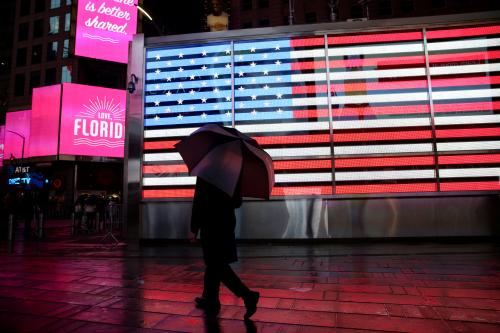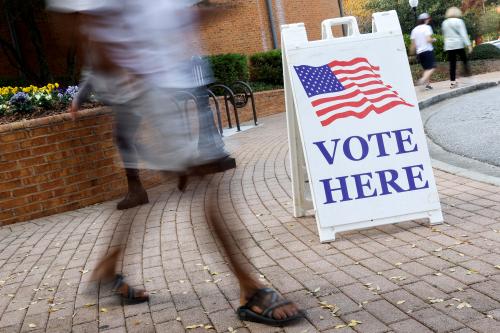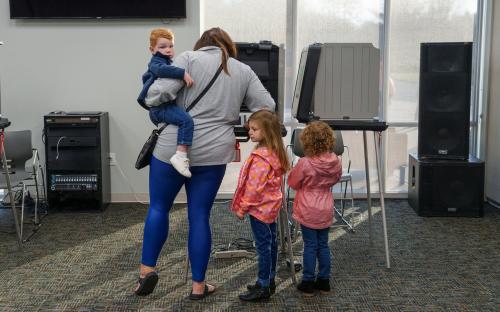Why did Donald Trump win the 2016 Presidential Election? Numerous reasons were canvassed in the aftermath of the result. Among them were the emergent power of social media and fake news (Allcott and Gentzkow 2017), Russian interference (Hall Jamieson 2018), the gap between low and high educated whites (Schaffner et al. 2017), lavish media attention on Trump (Sides et al. 2018), anti-incumbency (ibid.), economic anxiety (Autor et al. 2016), sexism (Valentino et al. 2019), and racism (Hooghe and Dassonneville 2018). In a prominent recent review of the literature and the evidence, Sides et al. (ibid.) acknowledge some role for all these factors but argue that the key force behind Trump’s victory was “racialized economics” and Trump’s willingness and ability to leverage it. Racialized economics is the tendency among some voters to consider economic issues not through an individual lens but through a racial one instead. As Sides et al. (2018, p. 8) explain:
The important sentiment underlying Trump’s support was not “I might lose my job” but, in essence, “people in my group are losing jobs to that other group”. Instead of pure economic anxiety, what mattered was racialized economics.
We quantitatively analyze this hypothesis using a very large dataset—the Gallup Daily Poll—and explicate the psychological roots of racialized economics. We argue that there is a channel from economic shocks to nativist voting via psychological wellbeing. Self-determination theory (SDT, Ryan and Deci 2017), a school of clinical psychology, argues that psychological well-being is a function of three basic psychological needs: for autonomy, competence, and relatedness. When these are thwarted, people will try to compensate. As economic decline in America is substantially a function of exogenous forces of globalization and technological change, there is little individuals can do to bolster their feelings of autonomy and competence. They may therefore focus on relatedness. One way to bolster their feelings of relatedness is by affiliating with salient identity groups such as race and nation. Similarly, theories of so-called “worldview defense” (WDT) argue that when people feel worried they will double-down on their in-group affiliations (Holbrook et al. 2011). In laboratory studies these typically overlap with broad identity markers like race and nation. Both literatures imply that economic decline, through its pernicious effect on psychological wellbeing, could encourage in-group bias. We argue that Trump, with his “America First” and “Build a Wall” policies and his nativist rhetoric, fueled and harnessed these sentiments to secure the Presidency.
Honing our hypothesis, a key inference of SDT and WDT is that in-group bias is more likely to manifest as identification with a broad group like race or nation when more intimate sources of group identification, like a church group or sports club, are unavailable. Sociologists have long noted that small, local sources of in-group identity, like bowling leagues and trade unions, have declined precipitously across America in recent decades (Putnam 2000, 2015). Religious affiliation and church attendance are similarly in free-fall (Pew Research Centre 2019). In line with the inferences of SDT and WDT, qualitative studies of Trump voters have tied this cultural decay to his success (Cramer 2016). A central thesis of Carney’s (2019) Alienated America is that Trump had greater cut through in areas with low levels of social capital and weak social institutions. Similarly, in her study of Tea Party supporters in Louisiana, Hochschild (2016, p. 225) writes that Trump’s “supporters have been in mourning for a lost way of life”. We therefore hypothesize that Trump should be successful in counties with high levels of worry and low levels of relatedness.
We test this hypothesis by combining rich individual-level well-being and socio-economic data from the Gallup Daily Poll with county-level data on economic indicators, racial animus, social capital, and election outcomes. We find that racial animus has a strong, positive association with Trump’s vote share independent from worry and relatedness. However, when we interact relatedness with racial animus, the coefficient on racial animus loses significance. Meanwhile, the interaction term is positively and significantly associated with Trump’s vote share. This suggests that people are using racial identification to bolster their sense of relatedness, in line with our hypothesis. In further support of our hypothesis, worry has a large and significant positive association with Trump’s performance, but an interaction between worry and relatedness is negative, substantially offsetting the independent positive effects of worry and relatedness. In other words, Trump had substantial cut through in worried counties except when they had existing sources of relatedness.
Read the authors’ related op-ed or download the full report.
The authors did not receive financial support from any firm or person for this article or from any firm or person with a financial or political interest in this article. The authors are not currently officers, directors, or board members of any organization with a financial or political interest in this article.









